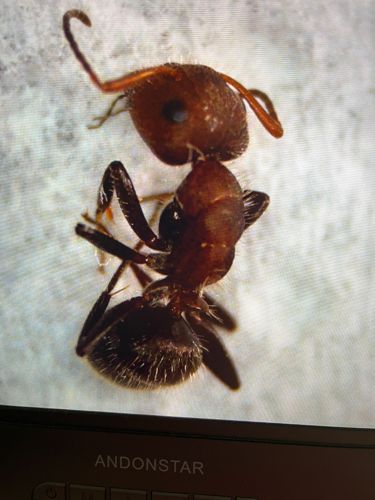Red Imported Fire Ant
Scientific Name: Solenopsis invicta
Order & Family: Hymenoptera, Formicidae (Myrmicinae subfamily)
Size: Workers vary in size, ranging from 2 mm to 6 mm (0.08 to 0.24 inches) in length.

Natural Habitat
Prefer open, sunny areas such as lawns, pastures, parks, and agricultural fields. Their nests are typically visible mounds of loose soil, but can also be built under objects like logs, rocks, or pavement.
Diet & Feeding
Omnivorous; they eat seeds, young plants, honeydew, and other insects (both live and dead). They are also known to prey on small vertebrates, such as young birds and reptiles.
Behavior Patterns
Colonial insects living in highly organized nests. They are known for their aggressive behavior, especially their painful sting when disturbed. They communicate through pheromones and forage in large groups. Nests can be found in a variety of locations, often mound-shaped in open areas, or less commonly under objects.
Risks & Benefits
Risks: Aggressive, painful sting that can cause red welts, blisters, and in rare cases, severe allergic reactions (anaphylaxis). They can damage crops, electrical equipment, and infrastructure. Benefits: They can be predators of some pest insects, but their overall negative impacts typically outweigh any minor benefits.
Identified on: 9/3/2025